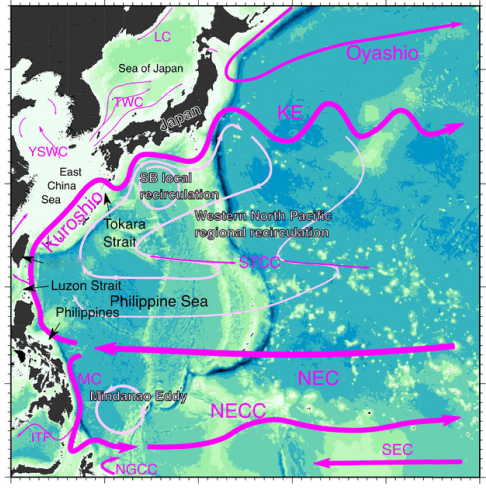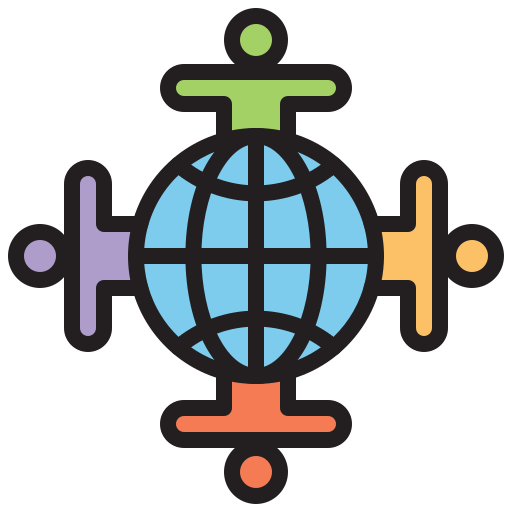

IOC Sub-Commission for the Western Pacific (WESTPAC)
Advancing knowledge and cooperation for a healthy ocean and prosperous society

Our Programme
2nd Cooperative Study of the Kuroshio and its Adjacent Regions (CSK-2)
Why is it important?

The Kuroshio is one of the world’s major ocean currents and the strongest current in the Pacific. It originates from the North Equatorial Current in the east coast of Philippines, flows through the east coast of Taiwan, enters the East China Sea, flows across the Tokara strait and enters the western North Pacific Ocean, and then flows toward northeast along the coast of Japan.
Known as the Black Current or Black Stream, the Kuroshio is named for the dark/deep blue of its water, as the area of the current has relatively fewer phytoplankton and sunlight is able to penetrate deep water. As a result, the waters appear dark blue compared to nearby ocean.
The Kuroshio holds important economic, social, and cultural significance to most of Asian countries. It is a warm current as it originates in the tropics, transporting a large amount of heart and salt northward toward polar region. The heat transported by these ocean currents affects the regional climate of East Asia and also the basin-scale climate of the Pacific Rim region via atmospheric and oceanic teleconnection. The recent study also shows that the area downstream of the Kuroshio—the Kuroshio Extension, is one of the major net carbon dioxide sinks for the Earth’s atmosphere, however, researchers are still exploring why the Kuroshio Extension is one of the regions with the largest net CO2 absorption.
The Kuroshio and its extension area also serve as important spawning and nursery grounds, and migration routes for many economically and ecologically important fish species, though he surface waters of the Kuroshio are nutrient poor. The reason for rich fish stocks being found in nutrient poor waters has been a compelling question.
What We Do?
The IOC started with the Cooperative Study of the Kuroshio and Adjacent Regions (CSK) in 1965 as its first major project in the region. During 1965-1979, a number of CSK activities have been carried out mainly by Asian countries. The first CSK not only substantially increased the knowledge on oceanography and fisheries in the Kuroshio and adjacent regions, but also greatly enhanced institutional research capacity of many countries in the region. The CSK laid down a solid foundation for international marine scientific research in the Western Pacific region, and provided the impetus for the establishment of an intergovernmental body for developing and coordinating ocean research in the region, i.e., the IOC Working Group for the Western Pacific established in 1977 at the 10th Session of the IOC Assembly in Paris, which later evolved as the present IOC Sub-Commission for the Western Pacific.
Following the termination of the CSK in 1979, interested Member States continued to conduct scientific studies of the Kuroshio and its adjacent regions, mainly unilaterally or bilaterally, with substantial scientific knowledge generated. However, most of efforts look into either limited geographical areas or specific scientific aspects of the transboundary current . The lack of integrated and coordinated approach indeed resulted in a limited understanding on the whole Kuroshio system, its variability, and impacts on marine environment and socioeconomic development of countries along the current in the changing climate.
WESTPAC responded to the demand of its Member States for an integrated study of Kuroshio, and set up an open-ended Intersessional Working Group in 2017 to conduct a feasibility study of the 2nd Cooperative Study of Kuroshio and Adjacent regions (CSK-2). Based on the IWG’s review on Half-Century of Scientific Advancements Since the Cooperative Study of the Kuroshio and Adjacent Regions (CSK) Programme – Need for a new Kuroshio Research, and a draft Science Action Plan, the Sub-Commission established the CSK-2 as its regional programme in 2021 at its 13th Session.
The CSK-2 aims to enable ocean research communities and other relevant ocean stakeholders to co-design and co-implement integrated and multidisciplinary investigations, research and analysis on the Kuroshio and its adjacent regions, in order to improve regional weather forecasts and climate predictions, and inform fisheries and aquaculture management.
The CSK-2 development is expected to span over ten years in line with the UN Decade of Ocean Science for Sustainable Development (2021-2030).






